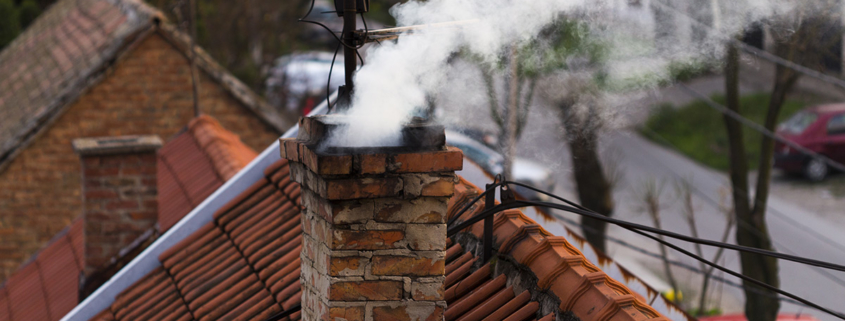Should Wood Burning Stoves Be Sold with a Clear Health Warning?
From 2022, all new wood burning stoves must comply with the Clean Air Act. This is the same whether you live in the country surrounded by green pastures or in an urbane city environment.
Now, in recent years some environmentalists and the health conscious have been up in arms, upset over the amount of particulate matter these wood burners emit into the atmosphere – and manufacturers have taken notice.
Buy a wood burner today and you can be assured that the product will have undergone a rigorous design and comprehensive tests to make sure that it adheres to all upcoming legislation. Choose the right wood burning stove and particulate emissions will be reduced by 90%. Moreover, today’s wood burning stoves will carry an SIA (Stove Industry Alliance) approved Ecodesign Ready Stove quality assurance.
Now, that’s all well and good, but herein lies the question: should all wood burning stoves be sold with a clear health warning? Let’s examine this.
The Research into Wood Burning Stoves Particle Emissions
Research conducted by the University of Sheffield and the University of Nottingham was undertaken to discover the extent to which wood burning stoves particulate matter was emitted indoors.
Sensors measuring particulate matter were placed near 20 different stoves over a four-week period, during which time 260 individual uses were recorded. Participants were asked to keep a diary and record the time the stove was lit, the duration of use, and the type of fuel used.
Universities Researchers’ Findings
After thorough research, which found higher concentrates of fine particulate matter (PM2.5 and PM1) was being released by wood burning stoves, it looked as though wood burning stoves needed to be sold with a clear health warning. This prompted the many governmental bodies, even the WHO to take notice.
However, there is a caveat to this, namely that the amount of particulate matter released depends on several factors, including the fuel source. Burning coal, for instance, releases much particulate matter into the air. Burning a species of dry wood, DOES NOT release unsafe levels of particulate matter. The bottom line: the fuel source is key.
But what is particulate matter?
Particulate matter is a mixture of solid particles and liquid air droplets. It can occur naturally or be human made. Particles are emitted when we burn solid or liquid fuels. So, anyone using wood burning stoves will potentially releasing particle matter into the air.
According to the Department for Environment, Food and Rural Affairs, (Defra), inhaling particulate matter can ‘exacerbate lung and heart conditions.’ The UK Government has also been vocal that children, the elderly and pregnant women are ‘more susceptible to the impacts of air pollution.’
So, it’s not surprising that burning fuel sources for to heat the home has come under much scrutiny. However, there is one BIG caveat. The biggest fuel culprits of particle release when burning are coal and WET wood – the sale of both will be completely phased out by 2023.
Of course, wood that has undergone a lengthy seasoning (drying) process will, not only be more efficient for burning but, be in-line with the UK Government’s guidelines for burning particulate matter. Before being sold, all wood should be seasoned (dried) until it has a moisture content of less than 20%. Wood with a moisture content of 10-20% is ideal. This is consistent across all species.
The Solution to Particulate Matter for Anyone with a Wood Burning Stove
So, burning dry wood and the release of particulate matter does not pose a threat to our health and well-being. Not only is dry wood safe to burn, but wood burning stove manufacturers have further improved their safety with new design features. There are also a range of accelerants, such as coffee grounds and shells and nuts which further reduce particulate matter.
Now, if you still approach using wood burners with a fair degree of trepidation, there are other actions that you can take to bolster their safety even further and promote peace of mind.
Make Sure They’re Installed Correctly
If you’ve bought a wood burning stove, make sure that it’s installed by a verified professional who can make sure that it’s completely safe to use. You should also have it inspected once a year to make sure that there are no cracks or faults – and that the location of the stove is still suitable.
From 2022, new rules for minimum efficiency levels will come into force. Spearheaded by the Stove Industry Alliance (SIA) who are currently working alongside manufacturers to make sure that new models meet government guidelines, it’s safe to assume that all newly installed wood burning stoves will be safer than ever before.
Is the Area Well Ventilated?
The importance of ventilation is obvious, but no less important – and especially important to people with respiratory conditions like asthma who, according to the British Lung Foundation, spend 90% of their time indoors, 60% of which is spent at home.
Exposure to pollutants can be controlled with adequate ventilation, something that’s paramount to wood burning stoves. Wood burning stoves with a high wattage should always be installed with a vent. Windows should have trickle vents to help the circulation of air also.
Regularly Clean Your Wood Burning Stove
Again, this is fairly obvious, but if you want to avoid a build-up of waste material that could affect the efficiency of your wood burner and stop your wood burner producing too much smoke, regularly cleaning the exterior of your wood burning stove and to bring in a professional chimney sweep, is paramount.
All you need is a soft brush and a damp cloth to remove any build-up of soot on the glass door and discolouration of the iron framework and door hinges. This will keep your wood burner clean – and it’ll be more secure.
With regular year-on-year use, the stove pipe can become lined with ash. To keep your wood burner safe and in optimal condition, you can use a wire brush to remove all the dark stains – or even hire a professional to perform a deep clean.
Should Wood Burning Stoves Be Sold with a Clear Health Warning?
The bottom line is that it’s not really our question to answer. It depends on any governmental guidelines. However, what’s clear is that wood burning stoves do not pose any risk to our health and well-being. In fact, they have become safer and safer as the years have gone by.
Just remember to use wood species that have a moisture content of less than 20%, that wood burners have been installed correctly, are well ventilated and cleaned routinely and you’ll be able to use safe, regular use for years to come.
Interested in learning more about the best species of wood to burn in your wood burning stove? Get in touch with us today or call 0333 300 1299 to find out more.




Leave a Reply
Want to join the discussion?Feel free to contribute!